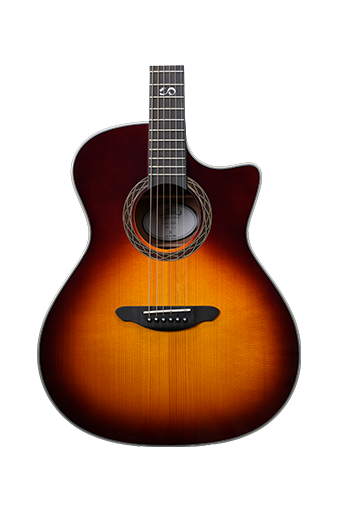
How Do Guitar Factories Ensure Consistency?
Introduction
Consistency is one of the most critical factors in guitar manufacturing. Whether producing budget instruments or high-end professional models, factories must maintain strict quality control to ensure each guitar meets specifications and plays well. Achieving consistency across thousands of instruments requires careful attention to materials, processes, craftsmanship, and quality assurance at every production stage. This article explores the various methods guitar factories employ to maintain consistency in their products.
Material Selection and Preparation
The foundation of consistent guitars begins with material selection and preparation:
Wood Selection and Aging
Guitar factories carefully source tonewoods that meet specific density, grain pattern, and moisture content requirements. Many manufacturers:
- Use quarter-sawn wood for stability (especially for necks)
- Implement strict moisture content standards (typically 6-8% for most woods)
- Age woods naturally or through kiln drying to stabilize them
- Sort woods by weight and tap tone for different instrument grades
CNC Machining and Templates
Modern factories use computer numerical control (CNC) machines to cut wood components with extreme precision:
- CNC routers can reproduce body shapes, neck profiles, and other components within tolerances of thousandths of an inch
- Digital templates ensure identical parts across production runs
- Laser-guided systems maintain alignment during cutting operations
Production Processes for Consistency
Neck Manufacturing
The neck is perhaps the most critical component for playability consistency:
- Factories use precise jigs and fixtures to ensure consistent truss rod channel routing
- CNC machines carve identical neck profiles repeatedly
- Fret slots are cut with specialized saws or CNC machines to exact depths and spacing
- Many factories laser-etch alignment marks for fretboard installation
Body Construction
For solid body guitars:
- Multi-axis CNC machines carve bodies to exact specifications
- Routing templates ensure consistent control cavity and pickup routes
- Weight relief chambers (when used) are positioned identically in each body
For Acoustic guitars:
- Side bending machines apply consistent heat and pressure to shape sides
- Laser-cut bracing patterns ensure identical soundboard structures
- Computer-controlled thickness sanding achieves uniform top and back thickness
Fretwork and Setup
Consistent fretwork is essential for good playability:
- Automated fret presses install frets with uniform seating pressure
- CNC-milled fretboards ensure perfect fret slot depths
- Robotic fret leveling systems create even fret heights
- Final hand-dressing ensures smooth ends and proper crown shape
Hardware and Electronics
Precision Parts Manufacturing
- Bridge and tuning machine mounting holes are drilled with CNC precision
- Pickup cavities are routed to exact dimensions for proper fit
- Control cavities follow standardized layouts
Electronics Consistency
- Pickup winding machines maintain consistent turn counts and tension
- Potentiometers are tested and matched for tolerance
- Wiring harnesses follow color-coded, standardized layouts
- Many factories use automated soldering stations for consistent joints
Finishing Processes
Preparation and Sealing
- Automated sanding machines create uniform surfaces
- Computer-controlled spray booths apply consistent sealer coats
- UV curing systems ensure even drying times
Paint and Clear Coat Application
- Robotic sprayers apply paint in precise, repeatable patterns
- Multiple light coats prevent runs and ensure even coverage
- Buffing machines use consistent pressure and compounds for uniform gloss
Quality Control Measures
Measurement and Inspection
- Digital calipers and micrometers verify critical dimensions
- Laser measurement systems check neck angles and alignment
- Electronic tuners test intonation accuracy
- Fret rockers and straightedges verify neck flatness
Playability Testing
- Trained technicians perform setup and play tests on sample instruments
- Action heights are measured at multiple points
- Nut slots are checked for proper depth and spacing
- Electronics are tested for proper function and noise levels
Climate Control
- Factories maintain stable humidity (typically 45-55% RH) and temperature
- Some use climate-controlled rooms for final assembly and setup
- Instruments may be acclimated before final inspection
Standardization and Documentation
- Detailed work instructions guide each production step
- Digital records track measurements and adjustments
- Regular machine calibration maintains precision
- Employee training ensures consistent craftsmanship
Conclusion
Achieving consistency in guitar manufacturing requires a combination of advanced technology, skilled craftsmanship, and rigorous quality control. From carefully selected materials to precision machining and thorough inspection processes, guitar factories employ numerous techniques to ensure each instrument meets their standards. While handcrafted elements still play a role in many factories, modern manufacturing technologies have made it possible to produce guitars with remarkable consistency at various price points. The result is instruments that not only look similar but more importantly play and sound as expected, giving musicians reliable tools for their craft.

Copyright © 2003-2025 Longsheng Musical Instrument Co., Ltd. Powered by:Lucky Cloud Network Technology All rights reserved.
SitemapThis website uses cookies to ensure you get the best experience on our website.
Comment
(0)